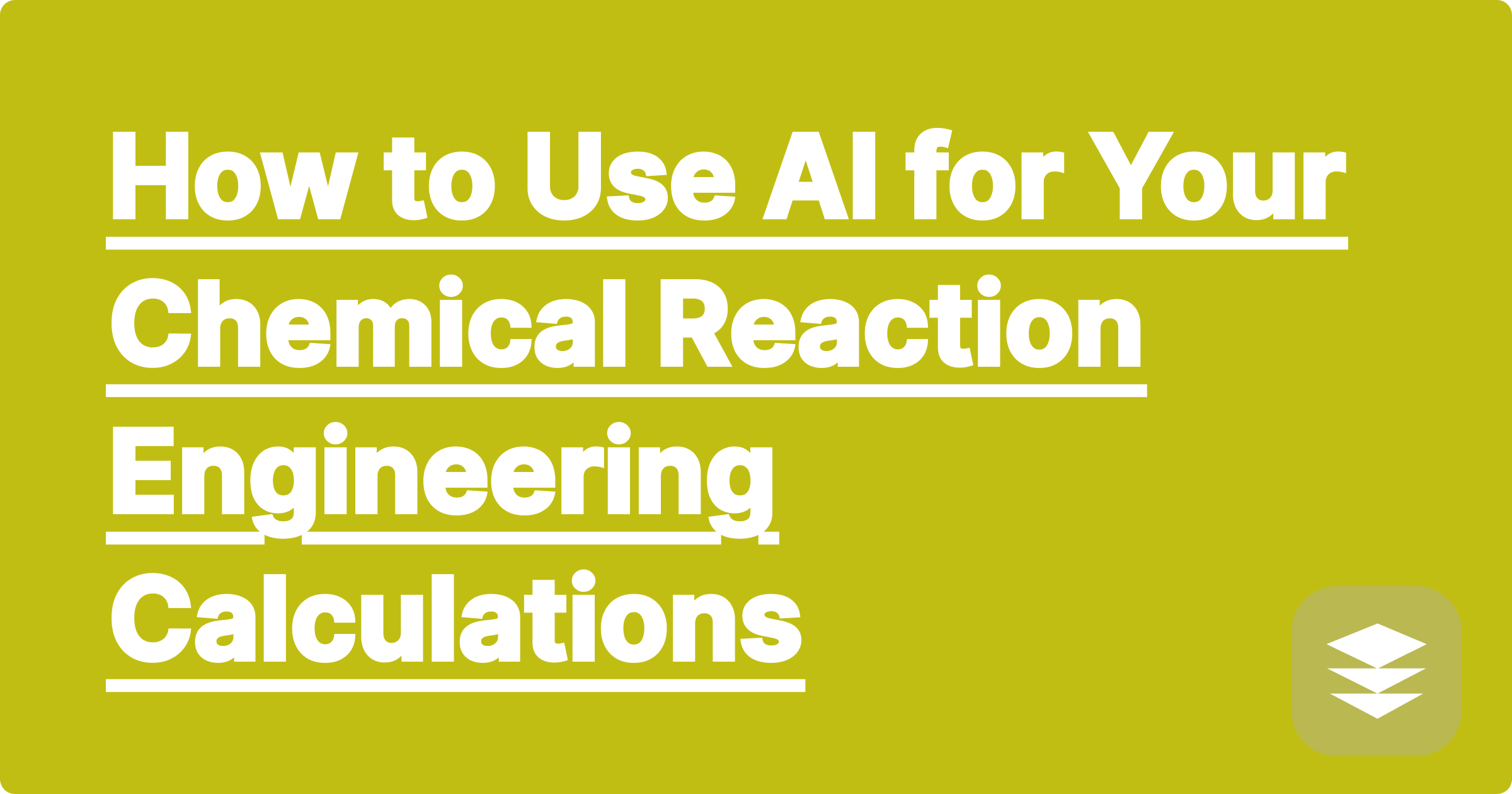
Chemical Reaction Engineering is a cornerstone of the ChemE curriculum. It's where you combine thermodynamics, kinetics, and transport phenomena to design and analyze the chemical reactors that are the heart of any chemical plant. The homework is notoriously challenging, requiring you to solve complex design equations for different reactor types (Batch, CSTR, PFR).
You're constantly working with rate laws, mole balances, and design equations that often involve tricky integrals or systems of differential equations. A small mistake in your setup or your math can lead to a completely wrong reactor volume or conversion rate.
This is where a specialized chemical reaction engineering solver becomes an essential tool. An AI assistant like GPAI Solver can handle the difficult reactor design calculations, automating the math and allowing you to focus on understanding the underlying principles.
The main difficulty in this course is that the design equation changes based on the type of reactor you are analyzing.
You must first choose the right equation and then solve it correctly. An AI can act as your expert pfr cstr design calculator.
Let's see how an AI can tackle a classic Plug Flow Reactor (PFR) problem, which often involves the most difficult math.
The Problem: "A first-order, irreversible gas-phase reaction A -> B is occurring in an isothermal, isobaric PFR. The entering molar flow rate of A is F_A0. Derive the equation for the reactor volume V required to achieve a conversion X."
How the GPAI Solver Handles It:
Before you can even use a design equation, you need the rate law (-r_A). For complex reactions, determining the rate law from experimental data is a challenge in itself.
You can use the GPAI Solver as a chemical reaction kinetics solver.
As you solve these problems, use the GPAI Cheatsheet to create a powerful study guide. This is more than a simple notetaker; it’s an active learning process.
Reaction engineering is about making smart design choices. By using an AI to handle the tedious and error-prone reactor design calculations, you can focus on the bigger picture: Why would I choose a PFR over a CSTR for this reaction? What happens if the reaction is reversible? This higher-level thinking is what will make you a great chemical engineer.
[Struggling with your reactor design homework? Try GPAI Solver today. Get step-by-step help with the toughest design equations and kinetics problems. Sign up now for 100 free credits.]
An AI-Powered Guide to Digital Logic Design and K-Maps
Mastering Your Microelectronics Course with an AI Op-Amp Solver
How to Use AI for Your Chemical Reaction Engineering Calculations
A Smarter Way to Analyze Pedigrees and Genetic Crosses with AI
From Lab Data to Perfect Graphs: Your AI Lab Report Assistant
How to Create the Ultimate MCAT Cheatsheet for Bio & Biochem with AI
Surviving Your FE Exam Prep with an AI-Generated Formula Sheet
How to Solve Your Economics Homework with an AI Graphing Tool
Can AI Help Debug Your Finite Element Analysis (FEA) Model?
The Best Way to Organize and Summarize Your Computer Networking Notes